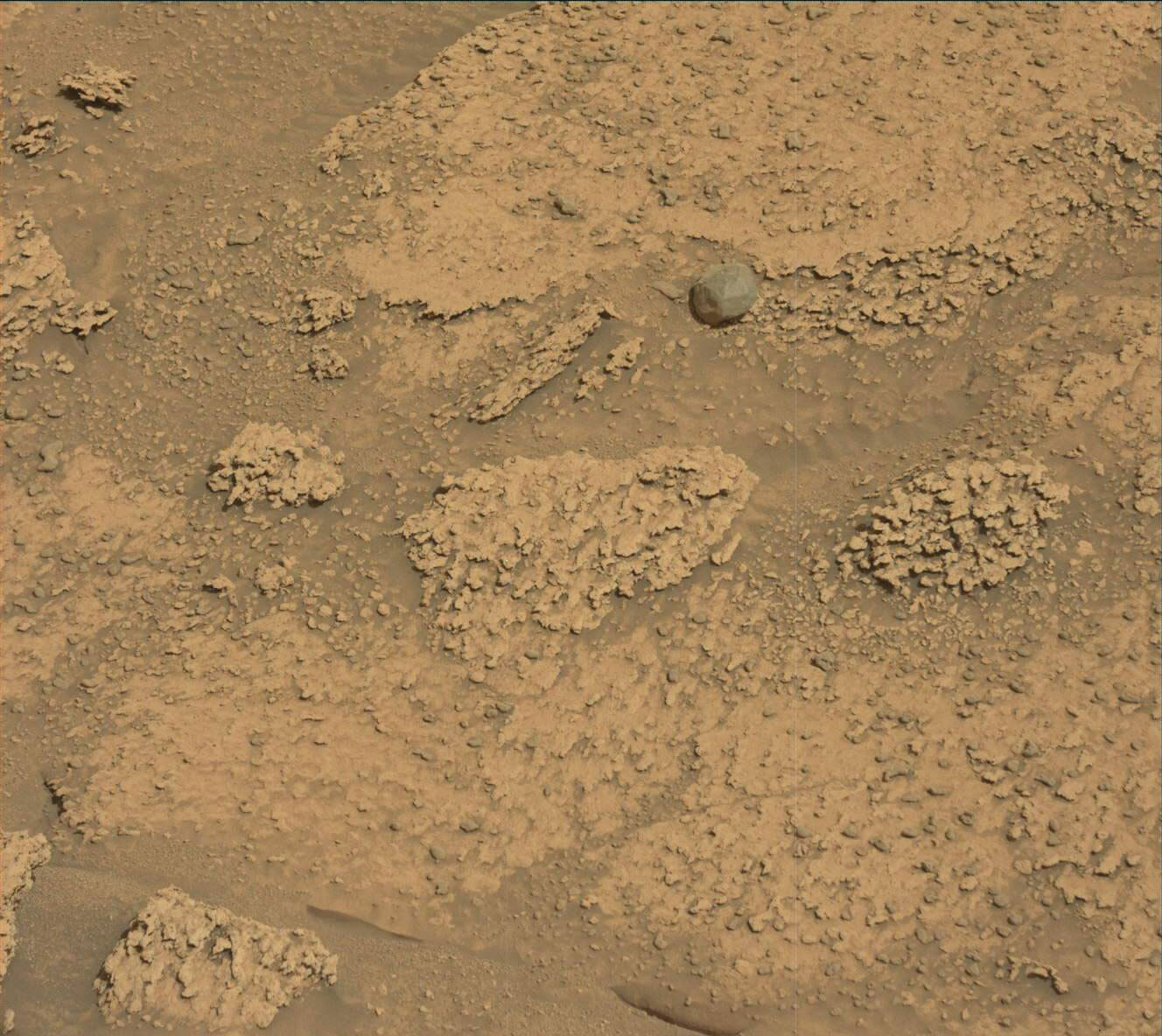2 min read

We continue to characterize the Marker Band and the bedrock just below it, with the aim of understanding the origin of the Marker Band. For today’s two-sol plan, in an area below the Marker Band, we planned early morning APXS and MAHLI (Touch & Go) on the brushed target “Jenipapo,” similar to the flattest material in the accompanying Mastcam image. Mastcam will acquire some multi-spectral imaging on the same target, and on the target “Pau Baru,” seen in the upper right of the Mastcam image. This is an unusual grey float rock which may be a remnant of material higher up Mount Sharp or may be a meteorite. We have analyzed a few meteorites over the past ten years, but they are not so abundant that we fail to get excited at the thought of a new one! ChemCam will use LIBS to target some rough textured bedrock at “Cuchivero,” directly below Pau Baru.
Our drives have been taking us alongside the Marker Band. Although the drill attempts at Amapari were not deep enough to be deemed successful drills, the geochemical results from there were intriguing enough to make us look for other similar locations, so that we can try again.
The Marker Band is a long thin horizon, which makes it hard to drill but relatively easy to follow and to pick out in images of the area in front of us. As a result, this plan (like other recent plans) has been chock full of images. Mastcam will take several images of the Marker Band from this location and also at the mid-point of the drive, to help us both understand the stratigraphy of the Band and also to help earmark new potential drill sites for the coming weeks. Mastcam will also document the near environment, looking at bedding structures (“Quitauau”) and fractures just beyond the rover.
Our drive is relatively short (23 metres) but will hopefully place us just below the Marker Band, so that we can assess the chemistry of the bedrock just below it.
Written by Catherine O'Connell-Cooper, Planetary Geologist at University of New Brunswick







